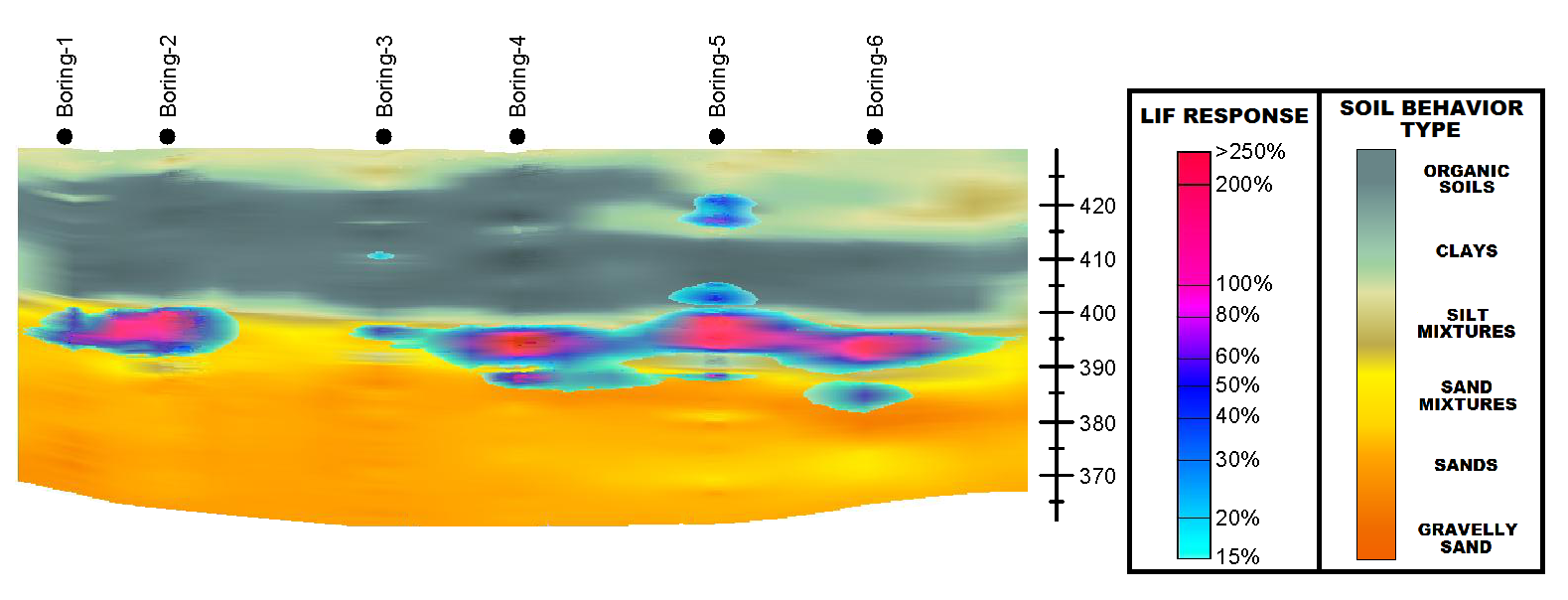- Services
- Investigation
- CPT/LIF
CPT/LIF
Cone Penetration Testing/Laser Induced Fluorescence (CPT/LIF) application represents an efficient application that combines in-situ geologic and real-time hydrocarbon screening data to evaluate the presence and distribution of light non-aqueous phase liquid (LNAPL) in the stratigraphic environment. The CPT characterizes the soil stratigraphy while LIF identifies the presence of petroleum hydrocarbons.
Key aspects of these investigation methods include:
- CPT consists of a cone with strain gauges mounted on a probe that is advanced hydraulically through the soil column. The strain gauges measure physical soil properties to produce a continuous, real-time stratigraphic record of the boring.
- LIF technology uses an ultraviolet wavelength laser source with an optical detector to measure fluorescence response to polycyclic aromatic hydrocarbon (PAH) compounds present in the soil matrix as the probe is advanced. The fluorescence response is measured simultaneously at each of the monitoring wavelengths (340, 390, 440, and 490 nanometers) that cover the range of fluorescence produced from short chain hydrocarbons (shorter wavelengths) to long-chain hydrocarbons (longer wavelengths). The relative percentage of fluorescence response at each of the four wavelengths is measured and plotted continuously on the LIF logs as four color bands. The logs show the depth, LIF response intensity, representative wavelength distributions, and an interpretation (color coded) of the presence of light, middle, and/or heavy petroleum hydrocarbon distillates.
- CPT/LIF investigations begin by advancing borings adjacent to monitoring wells containing LNAPL to develop a correlation between the LIF results and the presence of mobile LNAPL.
- Upon completion of the investigation, interpretations are made regarding the extent and behavior of LNAPL, the fluorescence response intensity, and the vertical extent of the response represented on the LIF log.
- Various software programs are used to integrate the CPT/LIF investigation data into cross sections and 2D/3D maps to visualize the relationship between subsurface stratigraphy and LNAPL.

